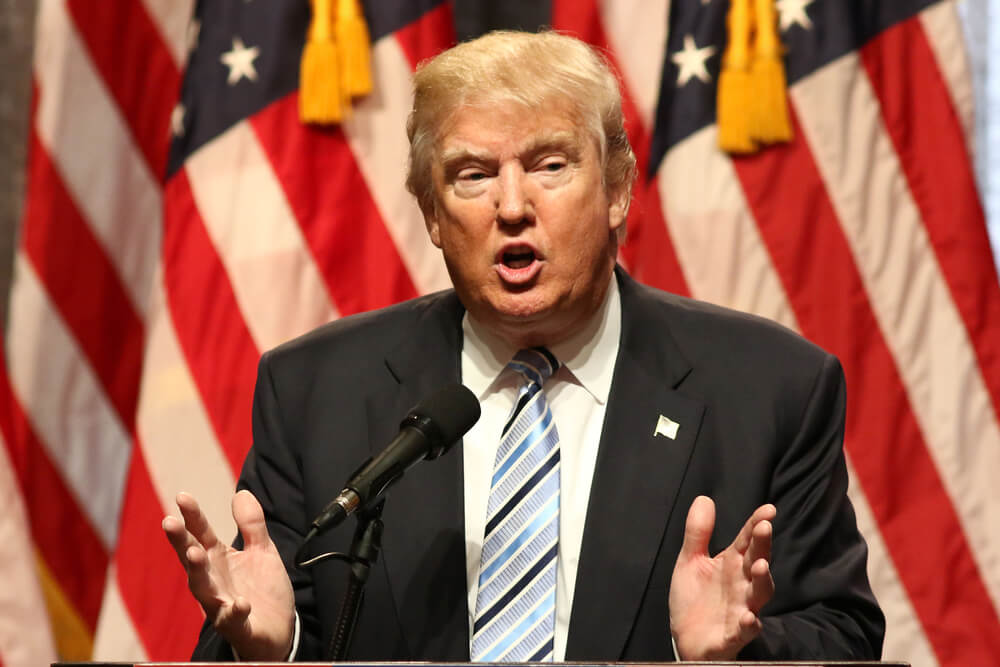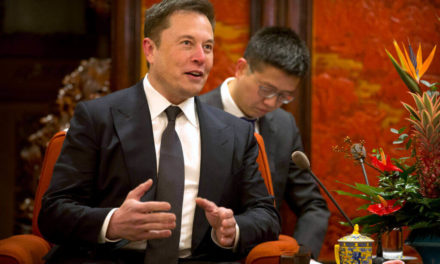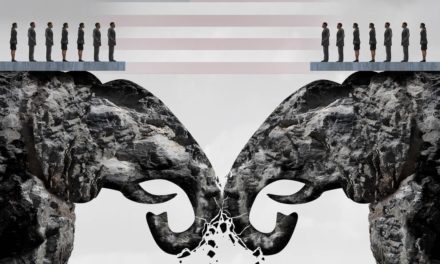President Donald Trump showcased his “America First energy policy” on Tuesday during a trip to Louisiana designed to highlight his administration’s efforts to increase liquefied natural gas exports and boost the country’s energy infrastructure.
Trump toured the outskirts of a $10 billion export terminal that will liquefy natural gas for storage and shipping. The process involves cooling gas vapor to a liquid state. Sempra Energy announced Tuesday ahead of Trump’s visit that the Louisiana plant has begun producing liquefied natural gas and will begin shipping to global markets in the next few weeks.
“Under my administration we have ended the war on America energy and ended the economic assault on our wonderful energy workers,” Trump said in a wide-ranging speech to workers that emphasized energy efforts but also touched on the 2020 Democratic field, the economy and his 2016 election.
Trump cites an increase in liquefied natural gas exports as boosting jobs and cementing the U.S. role as an energy provider for international markets. The administration has also promoted liquefied natural gas from the U.S. as a way for Europe to reduce its reliance on Russia for energy.
“We should be producing energy at home, not enriching foreign adversaries abroad,” Trump said.
Europe will be the largest purchaser of U.S. liquefied natural gas in the future, Gordon Sondland, ambassador to the European Union, told reporters on Air Force One.
“For too long, Europe has been in the stranglehold of Russian LNG and pipe gas. This is the beginning of the end of that stranglehold,” Sondland said.
Declaring that production of liquefied natural gas was increasing, Trump said: “What does it really mean? It means jobs, jobs, jobs.” He also criticized the Democrats’ Green New Deal proposal for aggressively cutting carbon emissions, predicting that “under that deal, everybody in this room gets fired.”
Still, it has not been all good news for U.S. producers. China announced Monday that it planned to increase its tariffs on liquefied natural gas from the U.S. to 25% as the trade war between the two nations intensified.
The president and congressional leaders are trying to work together on an infrastructure package that would boost energy development as well as rebuild roads, bridges and airports. Trump and Democratic leaders agreed to work toward a $2 trillion package, but it will be difficult for lawmakers and the White House to agree on how to pay for it.
Some Republican lawmakers have described raising taxes to pay for public works improvements as “a nonstarter.” Democrats, meanwhile, will be wary of speeding up environmental reviews to hasten construction.
The nation’s top business groups and labor unions support increasing the federal gasoline tax, currently 18.3 cents a gallon. It was last raised in 1993.
Democrats are waiting for Trump to unveil what he can support, knowing an infrastructure package will go nowhere in a Republican-controlled Senate without his strong backing.
As he spoke about his 2020 prospects, Trump made an infrastructure promise to Louisiana, a state that strongly supported him in 2016.
“If we win this election, we’re giving you a brand new I-10 bridge,” he said. “We’re gonna have it all set, ready to go Day One, right after the election.”
Trump also used the official government event to handicap his potential 2020 Democratic opponents. He said that former Texas congressman Beto O’Rourke is “falling fast,” and he mocked former Vice President Joe Biden, Massachusetts Sen. Elizabeth Warren and Vermont Sen. Bernie Sanders.
Trump claimed to the crowd: “Bernie’s got a lot of energy. But it’s energy to get rid of your jobs.”
The visit is Trump’s third to Louisiana since he took office. He also used the trip to attend a fundraiser in Metairie.
© The Associated Press. All rights reserved.




